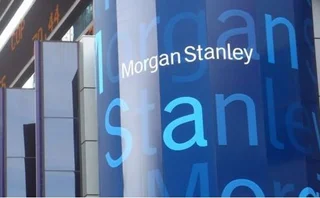

Commonwealth Bank blitzes IRRBB charges
Shake-up of banking book saves A$10.5 billion in RWAs
The Commonwealth Bank of Australia (CBA) slashed its capital charge for interest rate risk in the banking book (IRRBB) almost in half over the last six months of 2018 following an overhaul of its US dollar exposures and a shortening of the term of its capital investments.
IRRBB risk-weighted assets fell A$10.5 billion ($7.5 billion) or 43% to A$13.9 billion over the six months to end-December. The capital charge, calculated as 8% of RWAs, now stands at A$1.1 billion.
The bank said the drop
Only users who have a paid subscription or are part of a corporate subscription are able to print or copy content.
To access these options, along with all other subscription benefits, please contact info@risk.net or view our subscription options here: http://subscriptions.risk.net/subscribe
You are currently unable to print this content. Please contact info@risk.net to find out more.
You are currently unable to copy this content. Please contact info@risk.net to find out more.
Copyright Infopro Digital Limited. All rights reserved.
As outlined in our terms and conditions, https://www.infopro-digital.com/terms-and-conditions/subscriptions/ (point 2.4), printing is limited to a single copy.
If you would like to purchase additional rights please email info@risk.net
Copyright Infopro Digital Limited. All rights reserved.
You may share this content using our article tools. As outlined in our terms and conditions, https://www.infopro-digital.com/terms-and-conditions/subscriptions/ (clause 2.4), an Authorised User may only make one copy of the materials for their own personal use. You must also comply with the restrictions in clause 2.5.
If you would like to purchase additional rights please email info@risk.net
More on Risk Quantum
Basel III prompts Scandi banks to redraw credit risk
Danske, Handelsbanken and Nykredit scale back A-IRB under new rules
Morgan Stanley’s RWAs top $500bn after biggest jump since 2020
Derivatives and SFTs propel bank’s RWAs to record high
Why EU banks have snubbed revised green finance metric
Banks steer clear of Banking Book Taxonomy Alignment Ratio in droves
Basel III overhaul adds €85bn to EU banks’ op RWAs
BNP Paribas, Soc Gen and SEB see largest rises in absolute terms
CRE non-accruals still rising at Western Alliance and Valley National
Troubled CRE loans rise further in Q1 despite rate cuts and loan modifications
JP Morgan’s VAR limits blown twice during haywire Q1
Breaches add to the two regulatory backtesting exceptions sustained the previous quarter
BNP Paribas’s CVA risk charges swell 56% on Basel III overhaul
Impact of new formulas is largest yet for a G-Sib
Societe Generale rejigs liquidity buffer towards sovereign bonds
Central bank cash at smallest share since before pandemic







